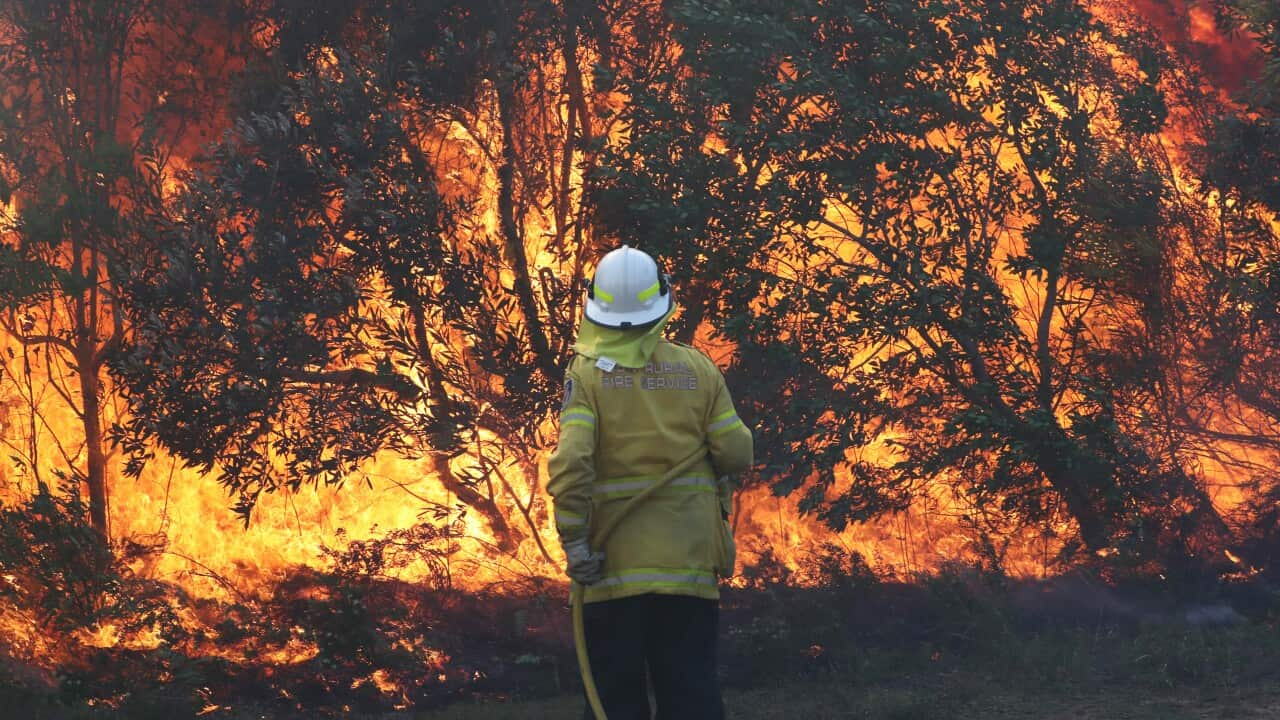Key Points
- The warmer weather and longer days of spring are usually associated with improved mental health.
- An early start to the bushfire season, and the promise of long, hot months ahead, may shift our views about spring.
- In addition to climate change, the BoM has declared that El Niño and a positive Indian Ocean Dipole are under way.
When we think of spring, we might imagine rebirth and renewal that comes with the warmer weather and longer days. It’s usually a time to celebrate, flock to spring flower festivals and spend more time in nature.
Spending time in nature or doing things outside, such as exercising or gardening, lifts our mood.
But this year, with an early start to the bushfire season, and the promise of long, hot months ahead, we may see our views about the warmer months start to shift.
For some people, the coming months are not a celebration. They are something to fear, or feel sad about.
In particular, communities and emergency responders who have experienced bushfires or drought in the past may see rising levels of stress and anxiety as they face the months ahead.
How is this spring different?
In recent weeks, the Australian Bureau of Meteorology has declared that two climate events are now under way: El Niño and a positive Indian Ocean Dipole.
These events predict warmer, drier conditions through to summer, as well as more intense heatwaves, bushfires and droughts.
In temperate and subtropical regions, our summers are on average becoming hotter and longer, and winters are becoming warmer and shorter. Climate change is the primary driver of these shifts.
What happens to our mood as the temperature rises?
Hotter temperatures and prolonged heat is linked to aggression and higher rates of emergency hospital admissions due to health conditions, heat-related injuries, and mental health concerns.
After an extreme weather event or disaster, rates of anxiety, depression and post-traumatic stress rise.
Many Australians have already experienced the psychological and physical impacts of bushfires, droughts, floods and heatwaves.
For some communities and individuals, experiencing these types of events may mean they are more resilient or prepared for the future. For others, the anticipation of rising heat or other climatic threats may cause concern. They may also prompt pre-traumatic stress – the stress that comes ahead of expected loss or trauma.
Climate change can cause anxiety, anger and sadness
As climate-related events become more widespread, people may also become increasingly affected by feelings such as anxiety, anger and sadness.
Climate anxiety refers to the fear, dread and worry about climate change. Anxiety can be a helpful response as it allows us to prepare and respond to future threats. For instance, climate anxiety may help prompt pro-environmental behaviour and climate action, such as attending a protest. But this type of anxiety can also become overwhelming.
The loss of wildlife and nature due to bushfires can leave people feeling grief over what’s lost, and anger about the lack of action to prevent these losses.
Losses could also be more personal, including damage to health, livelihoods, homes, or even the ability to do enjoyable outdoor activities, such as playing sports or exercising outside.
Another experience, solastalgia, is the “homesickness you have when you are still at home”. Researchers suggest solastalgia is a type of distress when someone perceives negative changes and gradual deterioration to their own home environment. These feelings could arise when we notice seasonal and environmental changes to the places we love and call home.
But there are things you can do
Heading into the hotter months, strong community support, cohesion and preparedness may be especially important. There are also things you can do to maintain and manage your mental health and wellbeing. Though more research is needed to understand which strategies work best, health professionals suggest:
- Connecting with others, especially people you trust and who support your wellbeing.
- Finding ways to connect with your community either in person (for example, through community gardening) or online (for example, via discussion groups).
- Being mindful of your physical and psychological safety (for instance, especially during climate-related events) and, if you need it, seeking professional support.
- Taking a break from distressing media content when needed.
Understandably, people may continue to be anxious about the seasons to come with the ongoing threat of climate change.
To avoid becoming overwhelmed, you can also respond to and channel your distressing feelings. You can take part in community-led climate action projects, and spend time outdoors and in nature (even for short bursts of time).
These actions might help uphold the positive links between wellbeing and nature, no matter the season.
Tara Crandon is a psychologist and PhD candidate at QIMR Berghofer Medical Research Institute.
Readers seeking support with mental health can contact Beyond Blue on 1300 22 4636. More information is available at . supports people from culturally and linguistically diverse backgrounds.













